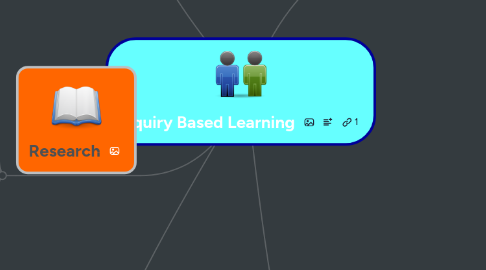
1. Student's Roles
1.1. Willingly engage
1.1.1. Curiosity
1.1.2. Movement
1.1.3. Conference
1.1.4. Personal ideas
1.2. Raise questions, propose explanations, and use observations
1.2.1. Ask
1.2.2. Use
1.2.3. Observe
1.2.4. Apply
1.2.5. Make connections
1.3. Plan and carry out learning activities
1.3.1. Try out ideas
1.3.2. Verify
1.3.3. Carry out activities
1.3.4. Sort
1.3.5. Detect and notice
1.4. Communicate using a variety of methods
1.4.1. Express ideas
1.4.2. Listen, speak and write
1.4.3. Use, apply and develop
1.5. Critique their learning practice
1.5.1. Assess
1.5.2. Recognize and report
1.5.3. Reflect
1.6. View themselves as learners
1.6.1. Look forward to learning
1.6.2. Desire
1.6.3. Collaboration
1.6.4. Confidence, take risks
2. Teacher's Role
2.1. Guide the students
2.1.1. Activate prior knowledge
2.1.2. Provide with background knowledge
2.1.3. Model what is expected
2.2. Observe the students
2.3. Encourage students to find the answers
2.3.1. Lead them back to goals
2.4. Take time to plan
2.4.1. Put in thought
3. Best Practices
3.1. Some important concepts have deeper meaning than learned in school
3.1.1. View the larger context
3.2. Search for answers
3.3. Work with others
3.4. Draw conclusions
3.5. Works well with cooperative learning
3.5.1. Collaborative learning
3.6. Multiple intelligence
3.7. Compose meaningful questions
3.8. Age appropriate activities
3.9. Use hands-on activities
4. Research
4.1. Modified Moore Method
4.1.1. Dahler 1998: Positive effect on conceptualization, self confidence, independent thinkers
4.2. Inquiry Approach K-12
4.2.1. Boaler 1998: Superior conceptual understanding
4.3. Cooper and Prescott 1989
4.3.1. The amount of student learning that occurs in a classroom is directly proportional to the quality and quantity of student involvement in the educational program.
4.4. School of Environmental Education
4.4.1. A team of teachers come together and decided on a unit question to discuss in all of the subjects combined. The students are free to choose the approach they use to find the answer. They will probably do something different for each class.
5. Steps
5.1. 1. Guided exploration
5.1.1. Whole class
5.2. 2. Student small group inquiry
5.2.1. Open-ended, debatable, contended issue
5.3. 3. Students ask questions
5.3.1. Personally relevant and socially significant
5.4. 4. Work in groups
5.4.1. Achieve diversity of views
5.5. 5. Predict, set goals, define outcomes
5.6. 6. Find or create information
5.6.1. Look for patterns
5.7. 7. Instruction
5.7.1. Serve as guide
5.8. 8. Create a tangible artifact
5.8.1. Addresses issue, answers questions and makes learning visible and accountable
5.9. 9. Learning is actualized and accountable
5.10. 10. Arrive at a conclusion
5.11. 11. Document, justify and share
5.11.1. Larger audience
